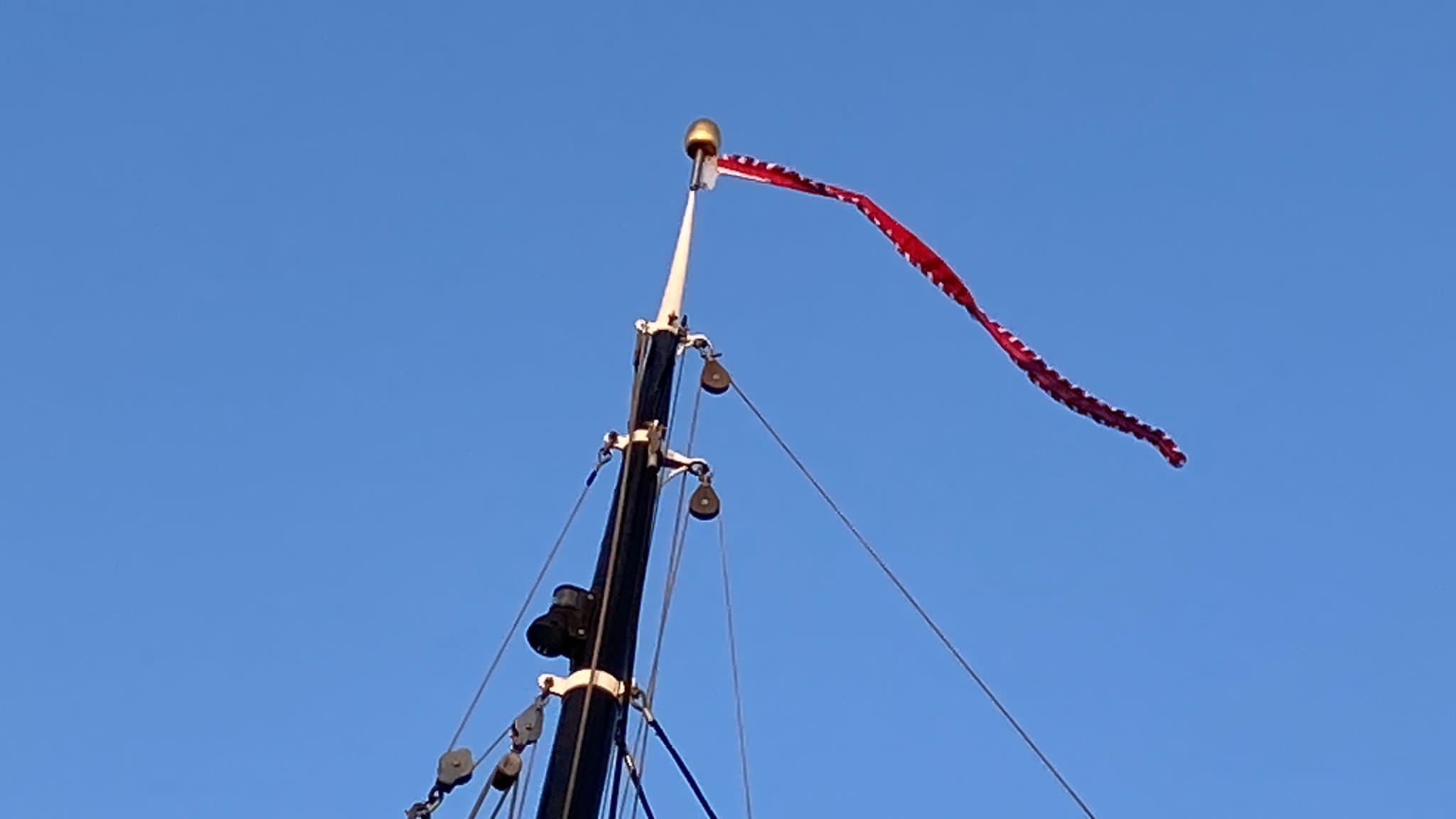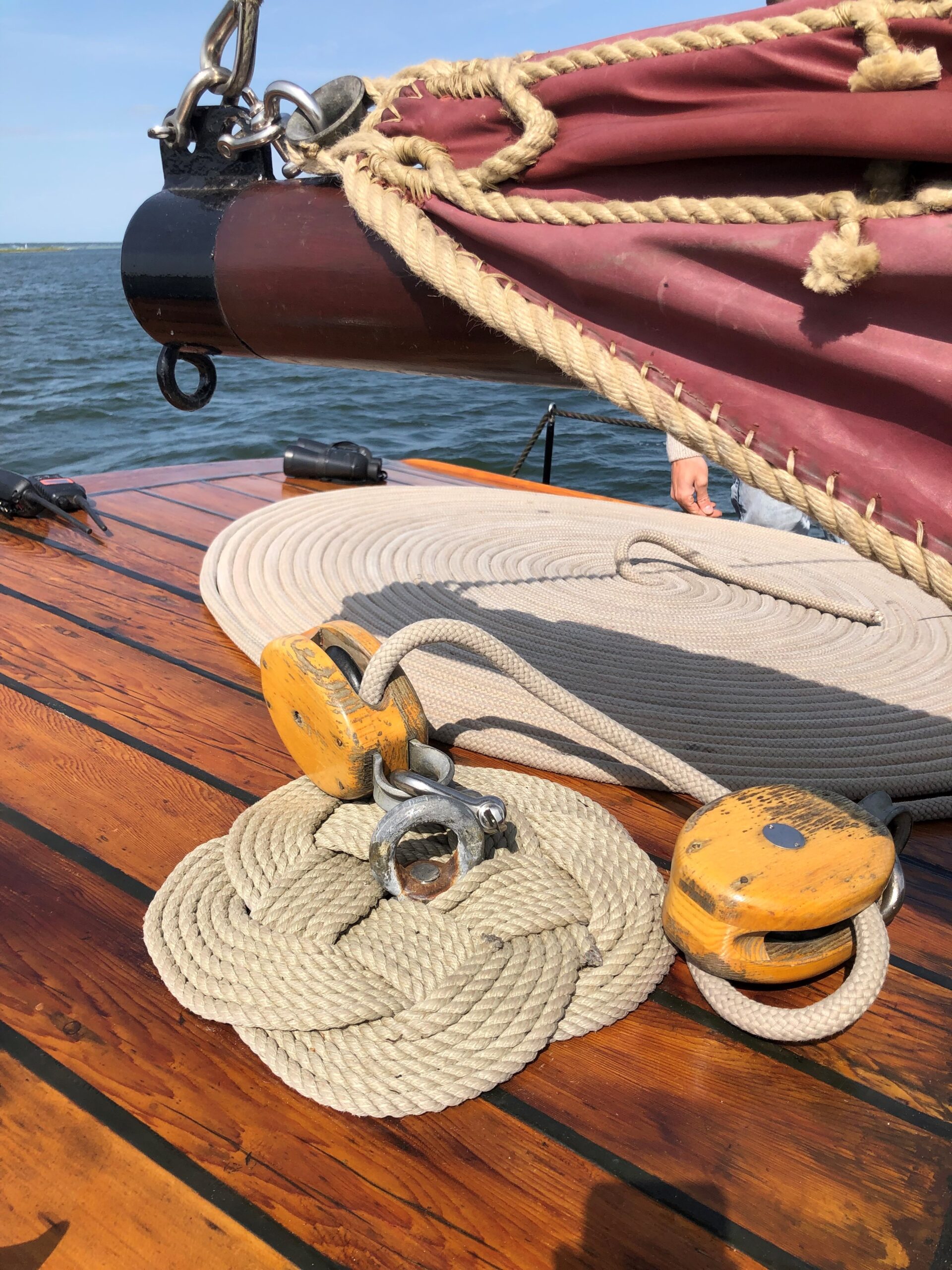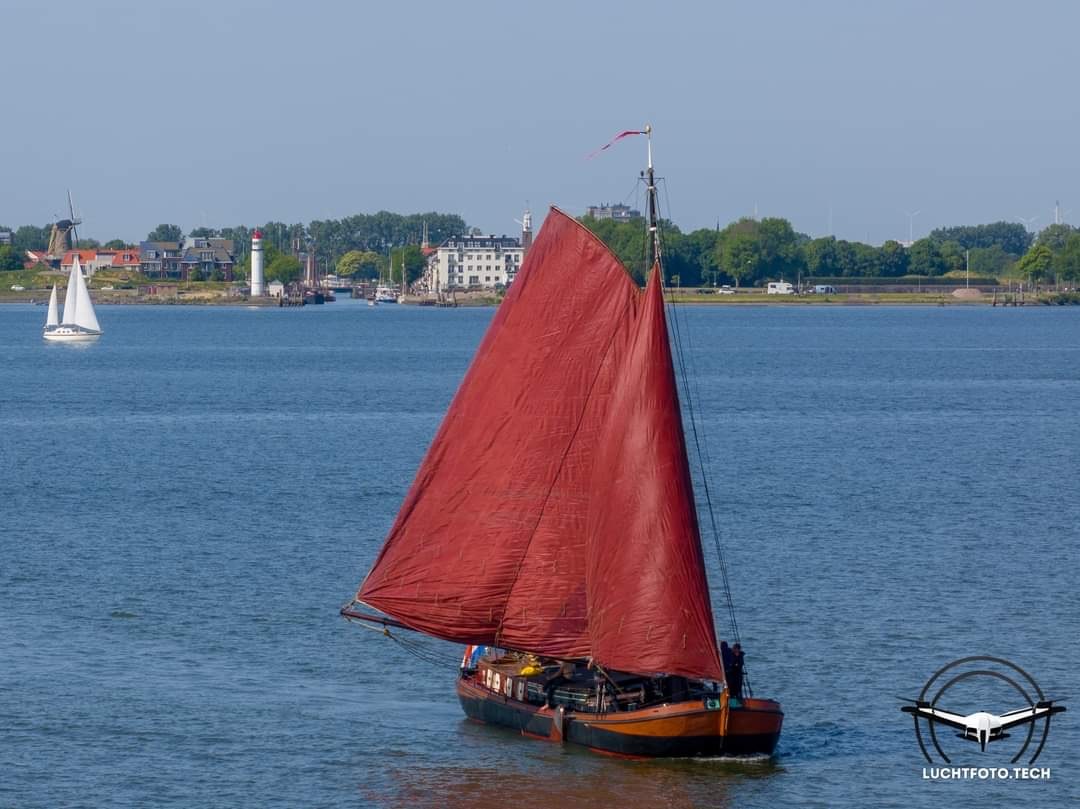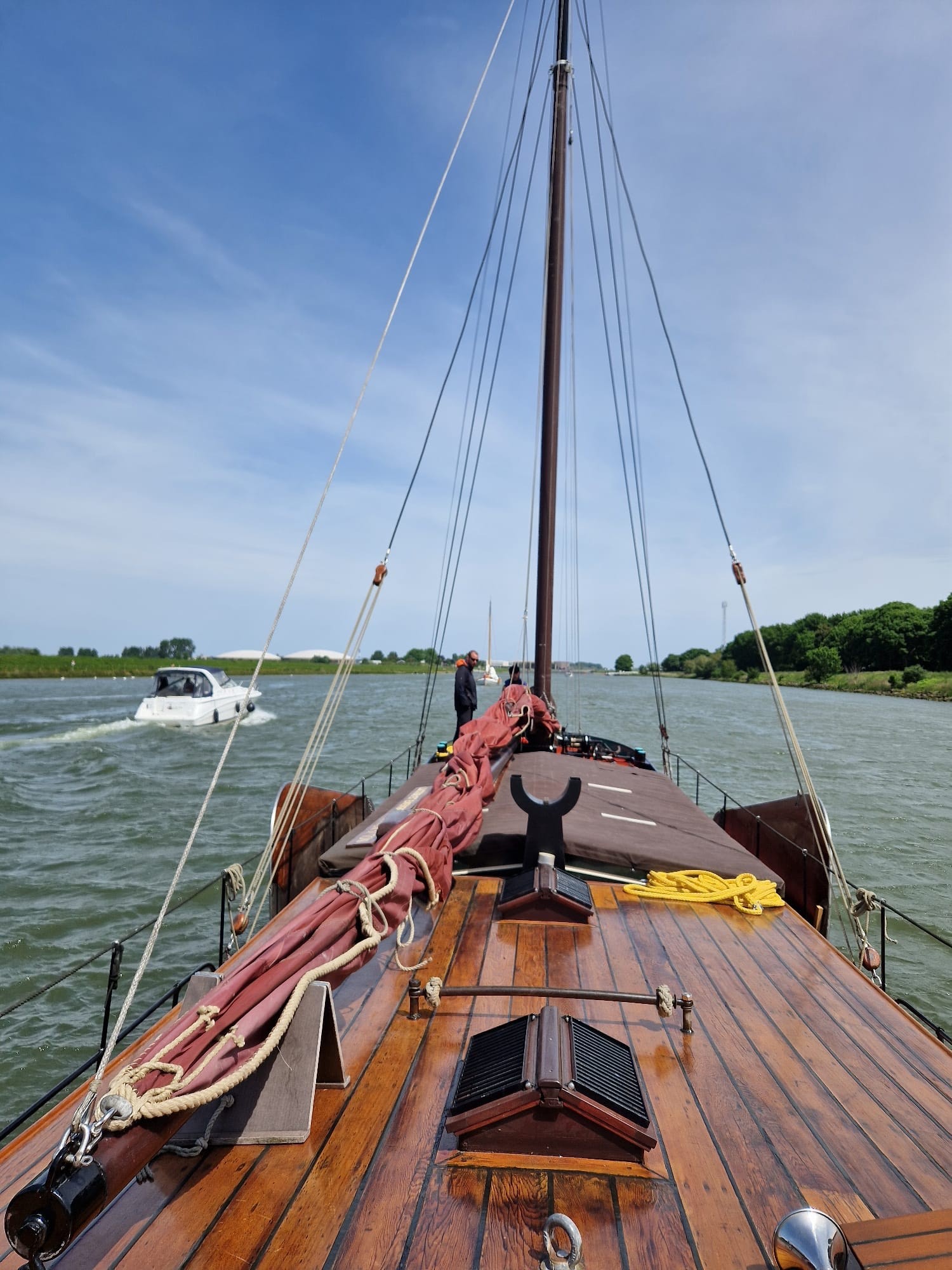Luctor et Emergo, origins and history
The Groninger Bulb Ship “Luctor et Emergo,” is a former sailing commercial vessel from 1909.
A discarded and partially demolished houseboat, the vessel was purchased by the current owner in 1976 for the scrap price and, over the next 10 years, carefully restored to a sailing houseboat under sail. The ship now has a permanent berth in Rotterdam, an A-status, making it a recognized sailing heritage and of historical value to the Netherlands.
Research in the Ship’s Register has established that the ship was then built in 1909 by the well-known shipyard van Wijk in Veendam, Groningen. Many ships were built on behalf of the Central Sugar Company in Groningen (CSM) to transport sugar beets. Outside the beet season, the ships were used to transport peat and linseed. Before that, the ships were leased by peat-colonial workers, peat cutters, from the CSM. Some of these workers, who had typically housed themselves in plaggen huts in the peatlands, managed to acquire a ship and start sailing on their own account. The plaggenhut was then exchanged for a simple dwelling aboard: the deckhouse.
The last recorded owner, of the Luctor et Emergo, was Johannes Steernberg who used it to transport peat in the Groningen peat bogs. Skipper Steernberg and his wife had three children who were born and housed on board. In the aft, the skipper, his wife and the smallest children slept in the box bed. Later, as was customary at the time, the older children were housed under the mast hatch. It takes little imagination to realize that life with a family on board was not a luxury. It is well known that families on this type of ship lived in great poverty. Presumably better than a sod hut, though!
Groninger bulb ships were built specifically to transport peat, sugar beets and sometimes linseed, on the shallow canals in the Groningen and Drenthe countryside. The mast, a simple braced spar, was mainly used to propel the ship: chase. A rope was hoisted into the mast to propel ship on shore. That pulling ahead was then done by a horse or by people. Skippers of “Bolschepen” had no money to rent a horse. Therefore, it was usually the wife and older children who pulled the ship onto the shore on the towpath, in the heem. The heem is a belt that was worn across the chest and was attached aft to the towline used to pull the ship. A towpath can still be found along some inland canals.
Sailing was done only when the ship was equipped with a boom and the wind was favorable. Mostly just a mainsail. The iron leeboards, a typical feature of this type of ship, were used to resist drifting (drifting) in side winds and enable the ship to stay on course in the narrow channels. In addition, the swords were effectively used to anchor the ship when it was stationary. The iron swords have since been replaced by larger wooden swords for better sailing.
When the Luctor et Emergo was first delivered, the deckhouse (the dwelling) was half as long as it is today. During the first restoration, it was decided to extend the deckhouse to allow the installation of a propulsion engine and make the entire ship suitable for permanent living. Incidentally, it is known that these types of ships were also built or converted in the past with an extended deckhouse to serve other purposes.
There are examples of ships of this size that were built as floating stores for pots and pans or were used as fairground ships. In the latter case, for example, a carousel was then transported.





